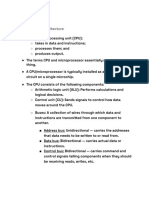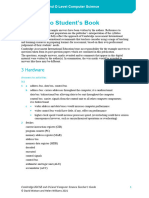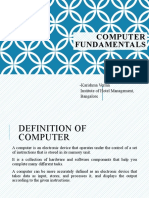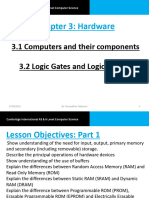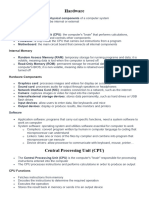0 ratings0% found this document useful (0 votes)
42 views11 pagesCs Hardware and Software
ppt for computer science
Uploaded by
squad.info.198Copyright
© © All Rights Reserved
We take content rights seriously. If you suspect this is your content, claim it here.
Available Formats
Download as PDF or read online on Scribd
0 ratings0% found this document useful (0 votes)
42 views11 pagesCs Hardware and Software
ppt for computer science
Uploaded by
squad.info.198Copyright
© © All Rights Reserved
We take content rights seriously. If you suspect this is your content, claim it here.
Available Formats
Download as PDF or read online on Scribd
You are on page 1/ 11
You might also like
- Caie Igcse Computer Science 0478 Theory 66c787aff9d4e70c0b2ddaac 707No ratings yetCaie Igcse Computer Science 0478 Theory 66c787aff9d4e70c0b2ddaac 70713 pages
- Chapter 3 (Components of The Computer System)No ratings yetChapter 3 (Components of The Computer System)9 pages
- Answers To Chapter 3 Activities and QuestionsNo ratings yetAnswers To Chapter 3 Activities and Questions14 pages
- Computer Fundamentals: Karishma Verma Institute of Hotel Management, BangaloreNo ratings yetComputer Fundamentals: Karishma Verma Institute of Hotel Management, Bangalore47 pages




